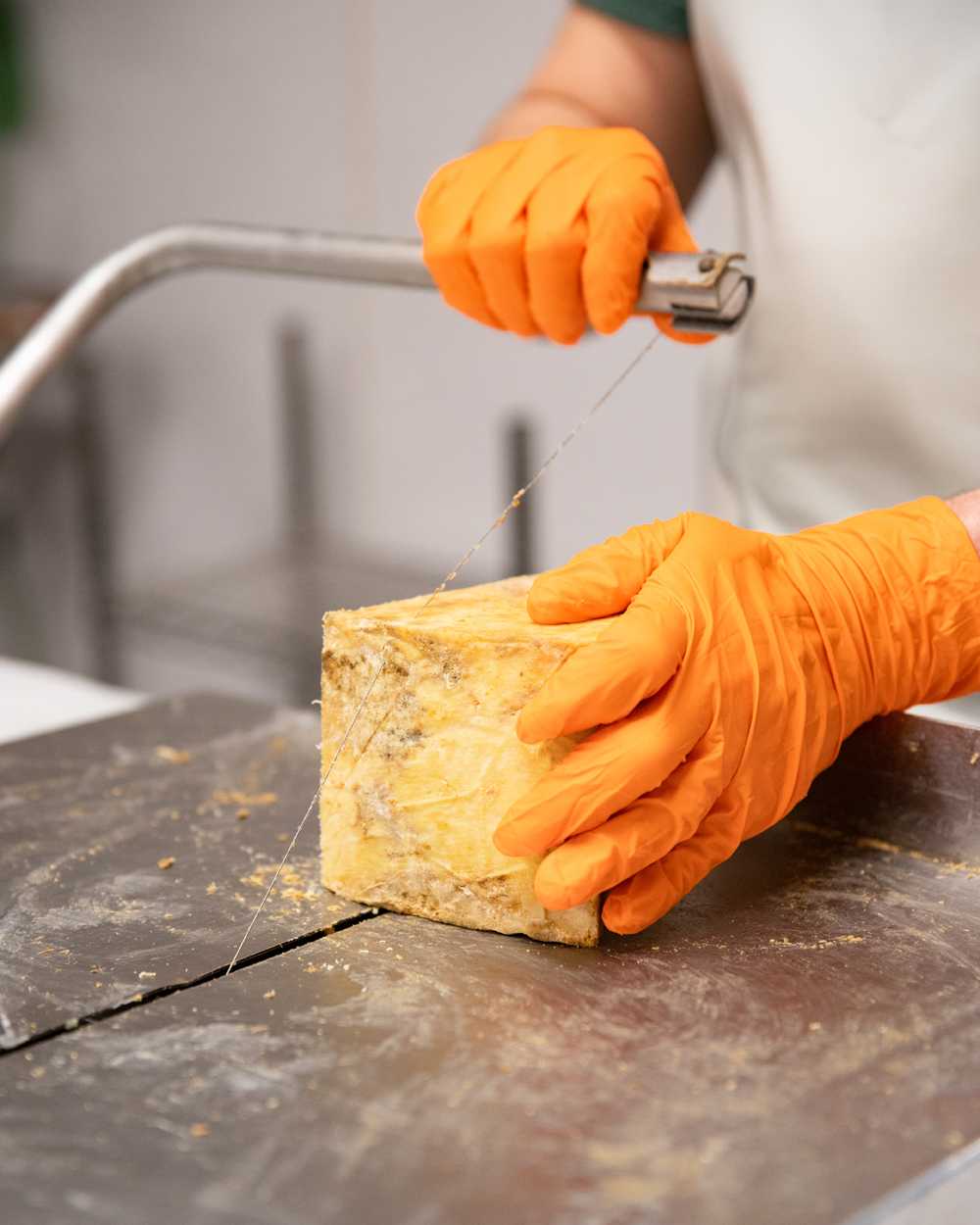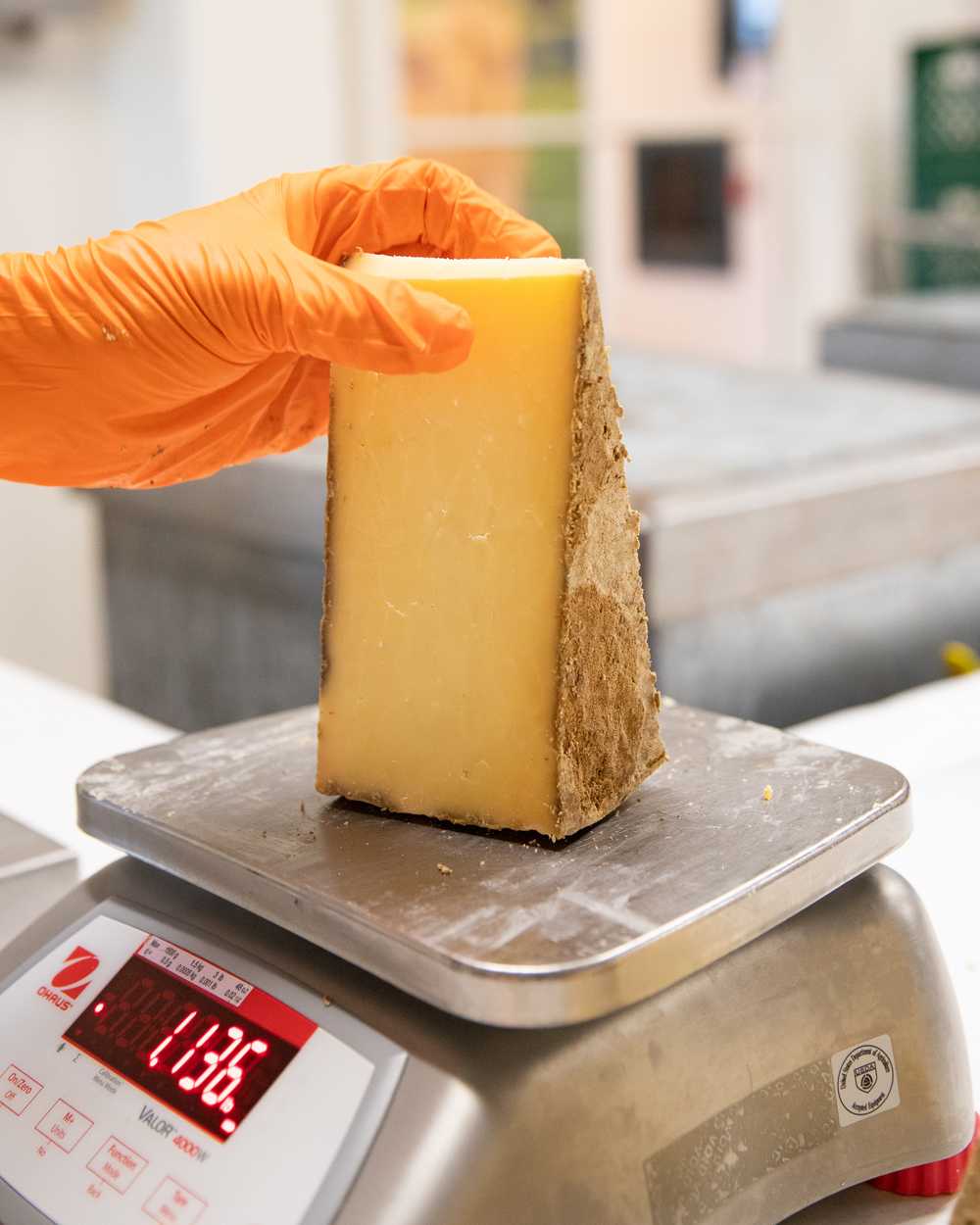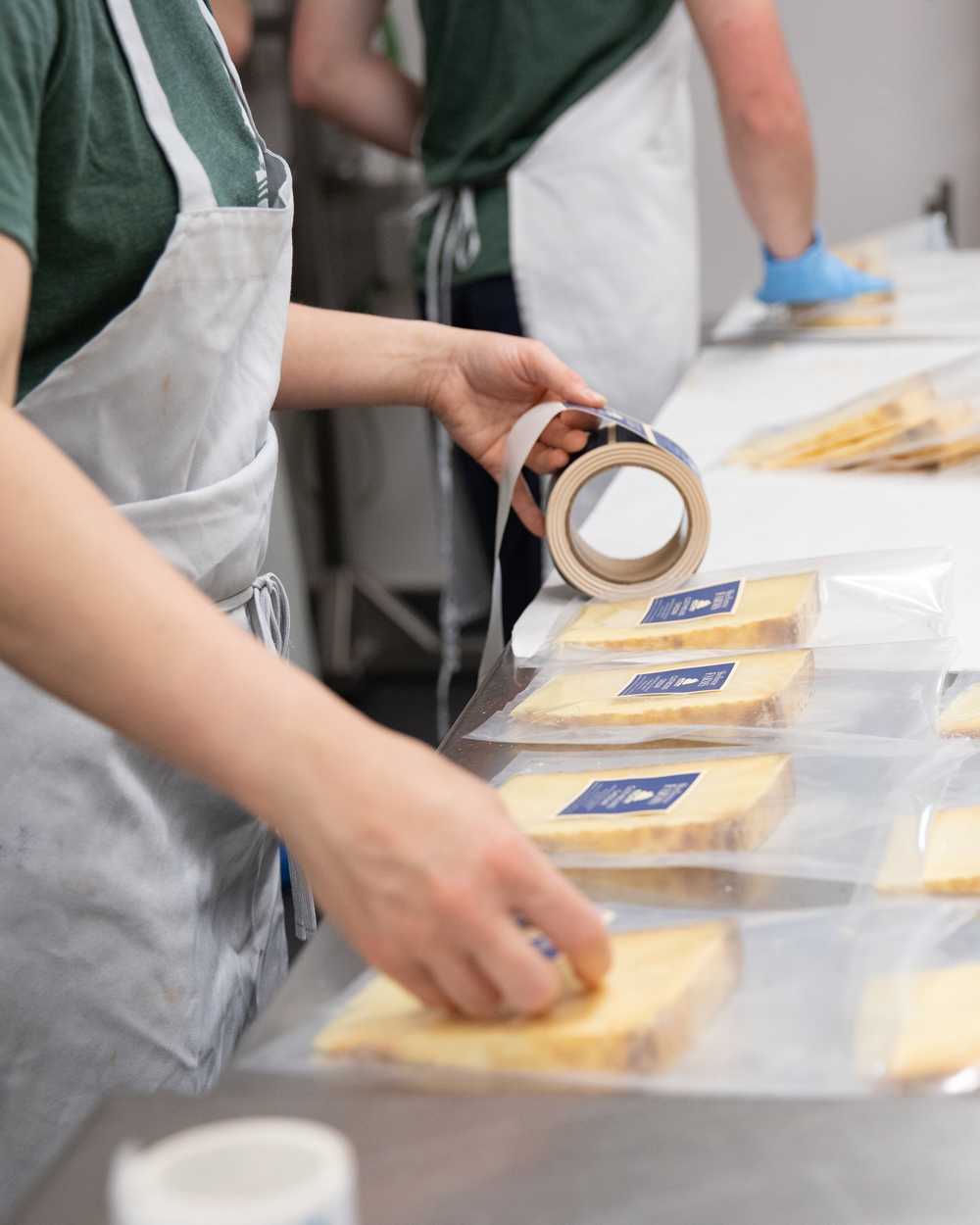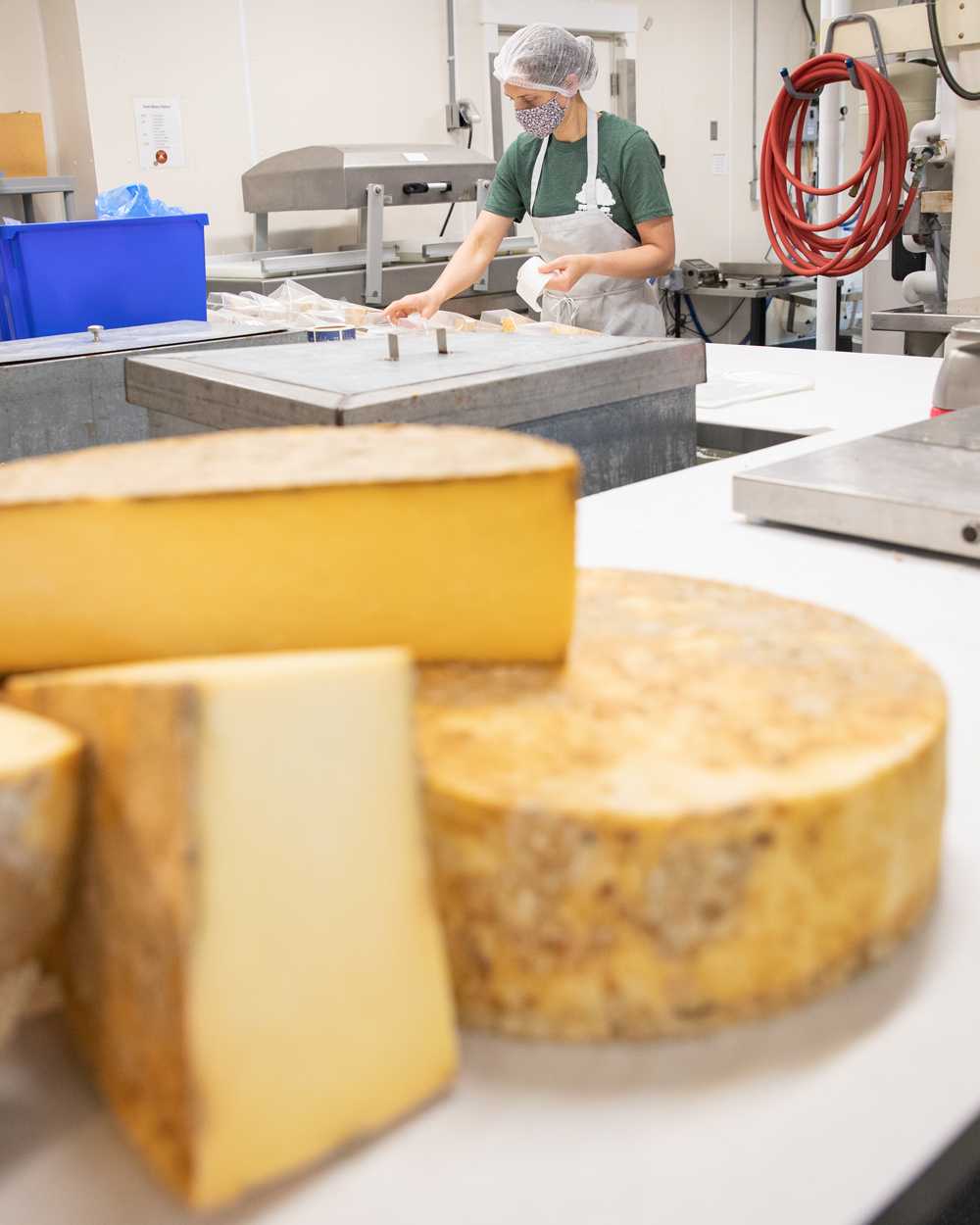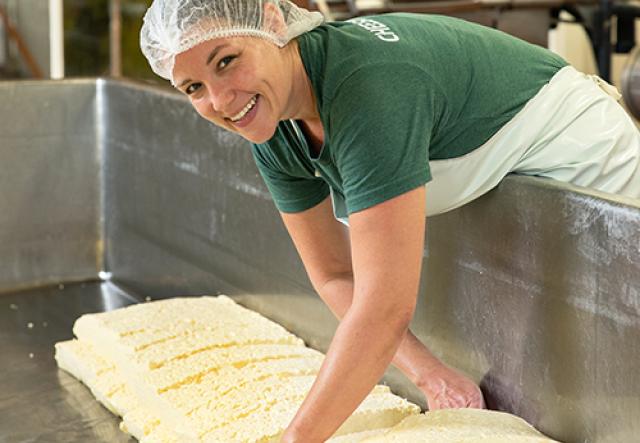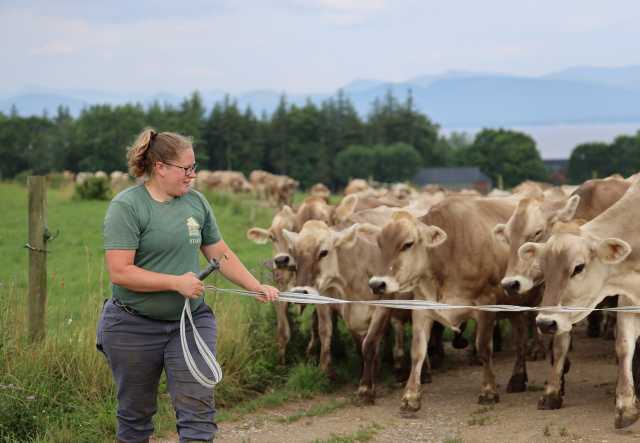The Surprising Journey of Clothbound Cheddar
Most of the cheddar we make is aged here on our campus. A tiny percentage—about 1.5%—takes a different journey.
As a collaboration between Shelburne Farms and Jasper Hill, our Clothbound cheddar is truly a labor of love for cheesemakers across the state. Our Creamery Manager Andi Wandt shares the surprising story behind this cheddar and why it’s worth the extra work.
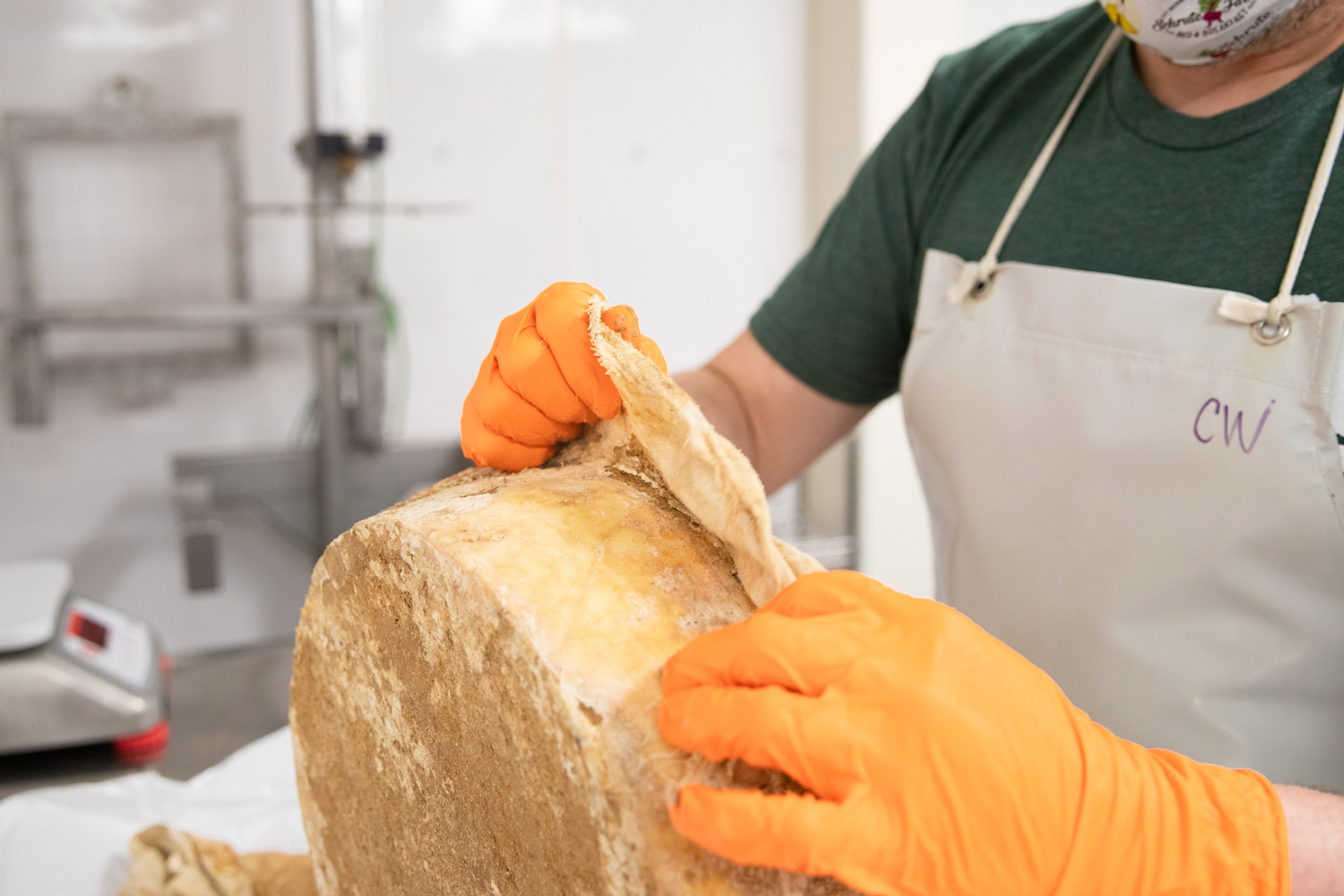
Dressed for Success
Muslin or cotton bandaging began to be used as “packaging” for cheddar in both the United States and United Kingdom during the colonial era. It replaced an earlier method of dry salting the exterior rind to create a dehydrated skin. The bandaging allowed for a longer aging time while protecting the cheese from cracks, cheese mites, and undesirable mold. American cheesemakers particularly struggled with cheeses cracking due to the climate here, according to former UVM professor Dr. Paul Kindstedt’s book Cheese and Culture. To solve this problem, they began “dressing” their cheeses with cotton soaked in butter to protect it from excessive drying. As butter became a more desirable commodity, lard was introduced as a plentiful and lower cost alternative, a practice that is continued today.
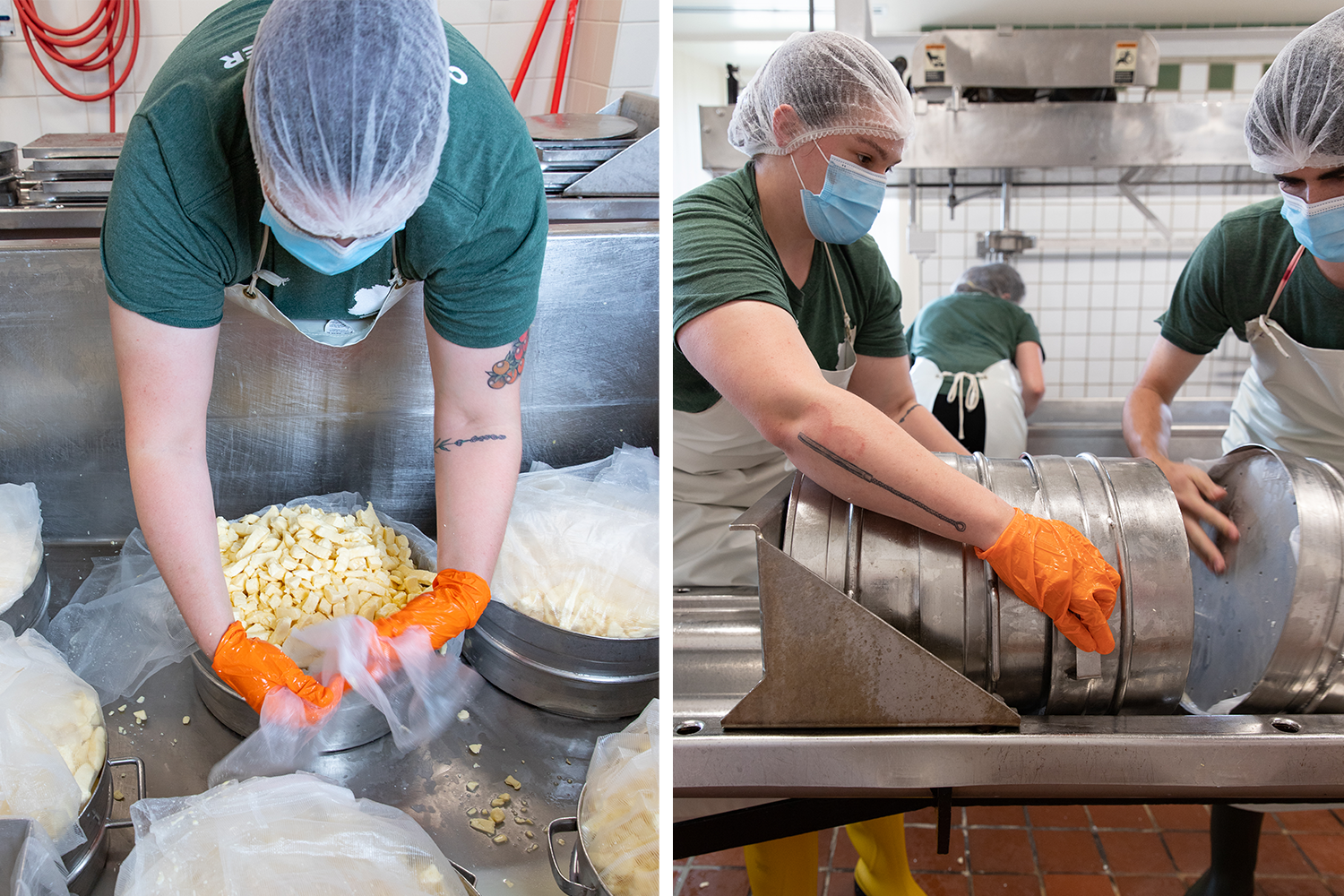
Extra TLC
Our wheels destined for the aging caves at Jasper Hill require quite a bit of extra love and attention. We intentionally make Clothbound when the milk is best suited to this style of cheese, allowing the microflora of our pasture to express itself fully through the cave-aging process. We make clothbound the same way we make all our cheddars, but a Clothbound batch is put into different, wheel-shaped molds. Then, when it’s unhooped the morning after the make, each wheel is trimmed into perfect, smooth rounds. The wheels are stored for two months, at which point we complete food safety testing.
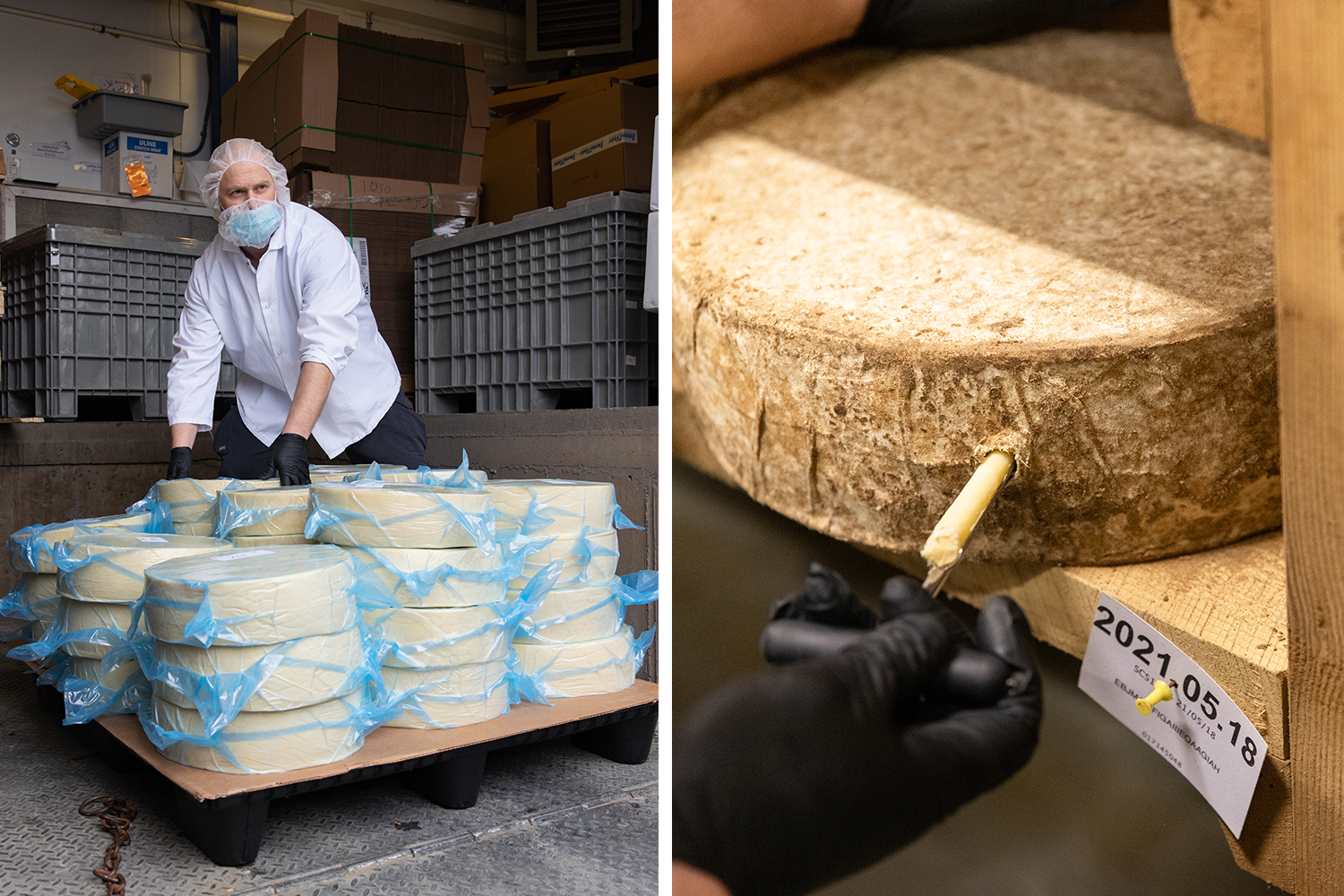
Once they’re cleared to ship, the 20-pound wheels are transported to the Jasper Hill Cellars in Greensboro, VT, where the bandaging process occurs. During the 12-18 month aging process in the caves, the Jasper Hill specialists keep close watch of the cheddars. Affineurs, as these specialists are called, hand brush the wheel surfaces, routinely turn the wheels, and monitor the conditions of the cave environment. The word affineur comes from the French word “to refine,” which is exactly what these specialists do as they guide the cheese’s progression into a complexly flavored cheddar. All their attention to the wheels works to develop an even rind and remove excess cheese mites. Cheese mites are literal cellar dwellers that munch on mold. These microscopic insects are harmless, and some scientists believe they positively contribute to the aging process. However, affineurs need to keep a close eye on these critters so that they don’t overpower the surface of the wheel.
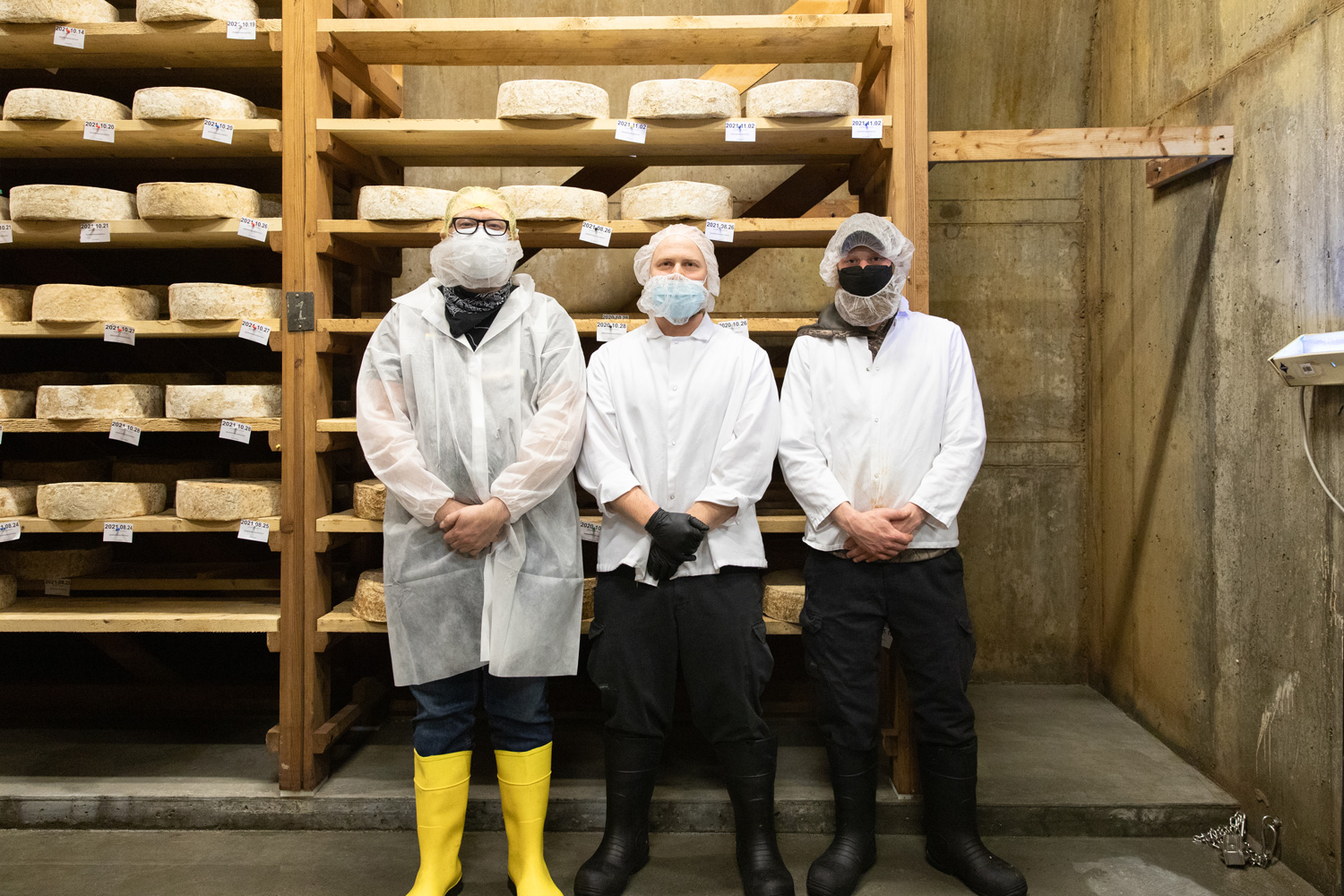
The Final Product
The exposure to the cave’s microflora introduces different bacteria, molds and yeasts to develop the cheese’s flavor by breaking down proteins and fats, and populating the rind. The flavor profile leans more toward the earth and grass realm, even verging into mustard and horseradish rather than the acidic, “sharp” profile we tend to associate with Vermont block cheddars. Due to the evaporation that occurs in the cellars, the texture of a Clothbound cheddar is also wildly different from its vacuum-sealed cousin: drier and crumblier.
Our sensory team heads to Greensboro to check in on the wheels as they age, monitoring their flavor development to create a schedule for the full wheels to get shipped back to us. Once the wheels return home to Shelburne Farms, they’re cut by hand into the familiar wedge shape (versus the neat squares our 40-pound blocks are sliced into).
A Cheddar with a Comeback Story
Clothbound, or bandaged cheddars, continued to be produced by small traditional English cheesemakers but mostly died out in the United States with the rise of the industrialization of cheese in the late 19th and early 20th centuries. It wasn’t until the artisan cheese revolution of the 1980s and 1990s that the style reemerged on our shores. In fact, author Gordan Edgar in his book Cheddar credits Shelburne Farms with helping to bring back the style to the United States. In the early nineties, former Head Cheesemaker Mariano Gonzalez connected with folks throughout the industry (including Dr. Kindstedt) for guidance in making and aging traditional clothbound cheese. We’ve been honing our Clothbound Cheddar recipe ever since!
So why do we do it? I see it as our tribute to the artisan nature of farmstead, raw milk cheese. Sitting down with a slice of Clothbound, perhaps paired with a local IPA or cider, is one of the truest expressions of Vermont’s agricultural landscape.
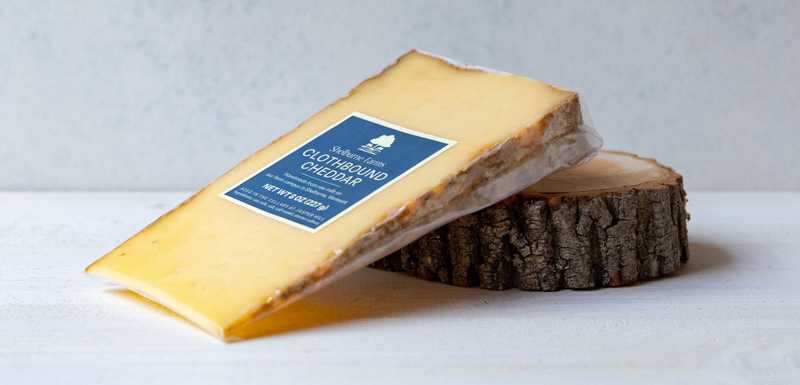
🧀 Clothbound Cheddar for the Holidays!

